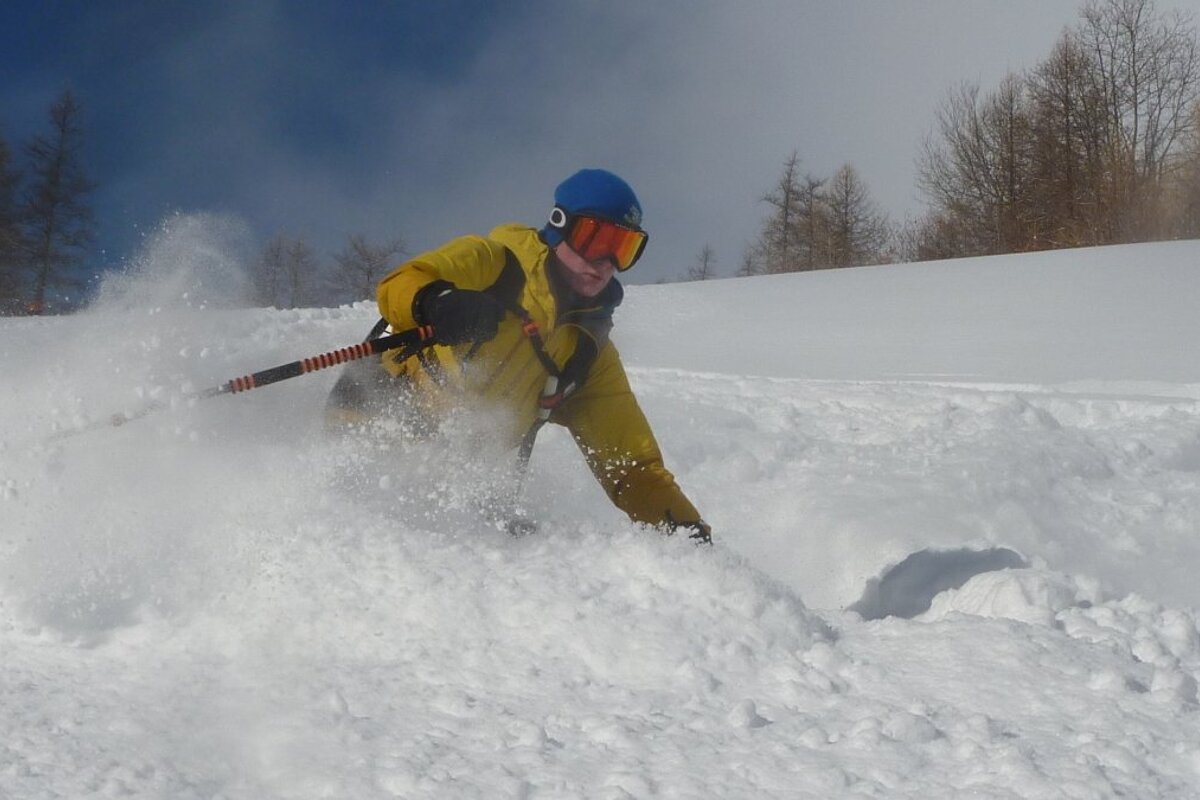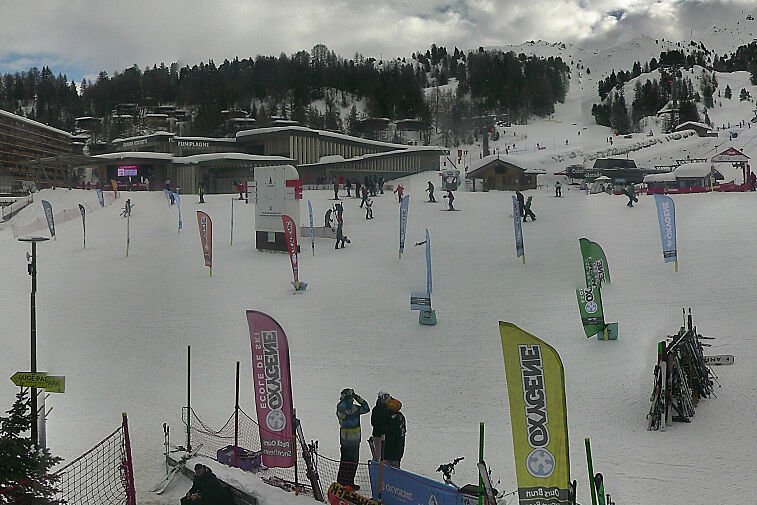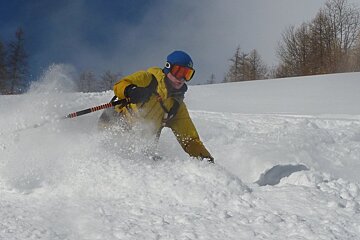
© Wayne Watson
Latest Gear: Big Mountain & Powder Skis
Pick a perfect powder partner for this season
In keeping with the conditions you can expect out there this coming winter, here's some of the best big mountain/powder/backcountry orientated skis on the market.
These skis all differ slightly depending on shape, flex and profile. Some are aimed at charging big lines, some at getting playful in powder. All are geared towards the skier who’s looking to getting away from the pistes and explore the backcountry.
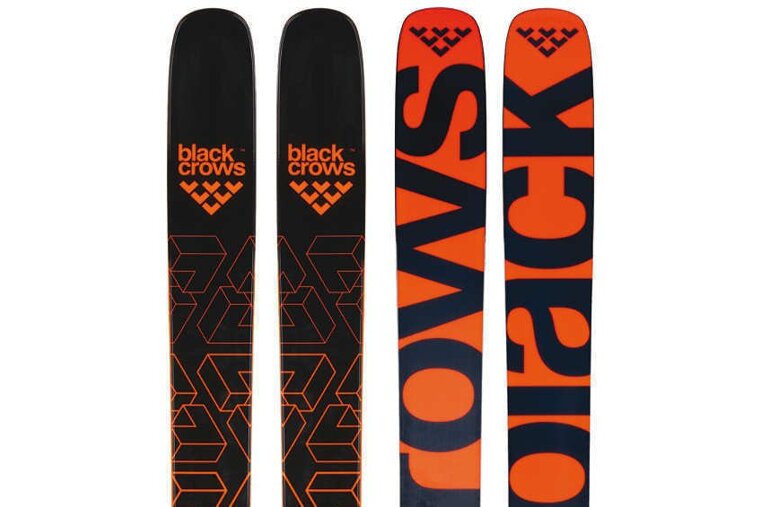
Black Crows Nocta
The Nocta is a lightweight powder ski that’s ideal for the skier who’s looking for a ski to rip the whole mountain. Equally at home on a big Alaskan line as it is lapping pillow runs in BC, the Nocta has a shape and profile aimed at providing both stability and fun. Float comes from the fat 122mm waist and the full reverse camber, which also helps with turn initiation and keeps the ski nimble in tight spots. The 26m turning radius and smooth consistent flex give the ski stability at high speeds and in big terrain.

Volkl Mantra
The Mantra is a legendary ski. It has a reputation for being a solid and dependable freeride ski with great edge hold and versatility. The 2018 model maintains these characteristics. It has a go-anywhere profile and construction. The 100mm waist and early rise tip rocker gives the ski float and control in powder but doesn’t sacrifice the ski’s performance in hard snow. The Mantra may be the ultimate all-terrain ski - equally at home in powder, crud and on piste too.
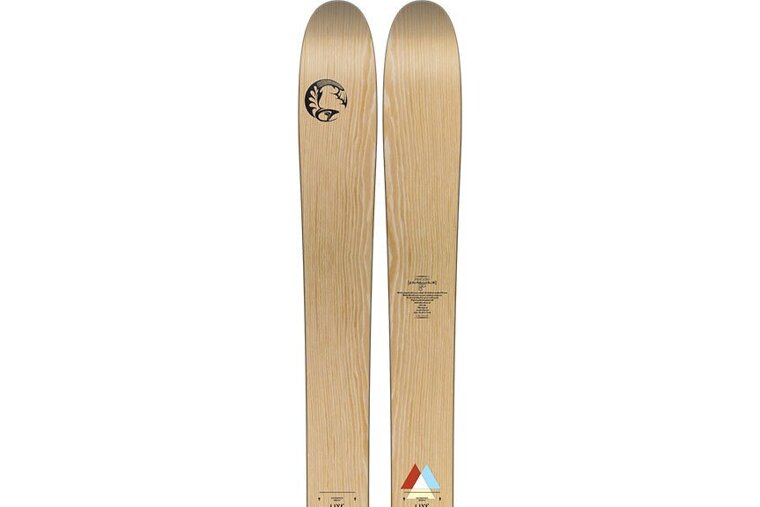
Line Pescado
Drawing influence from swallowtail snowboards and surfboards, the Line Pescado is Eric Pollard’s unique powder ski. Pretty much unlike anything else on the market, the Pescado is designed to surf, slash and glide its way through deep terrain. With a swallowtail that provides great float and control in powder and 20mm of tip rocker, the Pescado is clearly aimed at skiers who seek out the deepest snow. The Pescado’s playful flex means this is a ski for getting creative on too. Heading for the deep trees of Hokkaido this winter? The Pescado is the perhaps the ultimate Japow ski.

DPS Alchemist Lotus 124
DPS are probably associated with powder skiing more than any other brand - and for good reason. Over the past decade, their commitment to innovation and progression in powder ski design has been second to none. The Alchemist Lotus 124 is a new ski in the DPS line for 2018. It combines Alchemist construction which uses aerospace grade carbon for a smooth, damp ride with a pow specific shape and profile. The result is a ski that rides deep snow as well as any other yet remains versatile enough to ride in harder snow too.
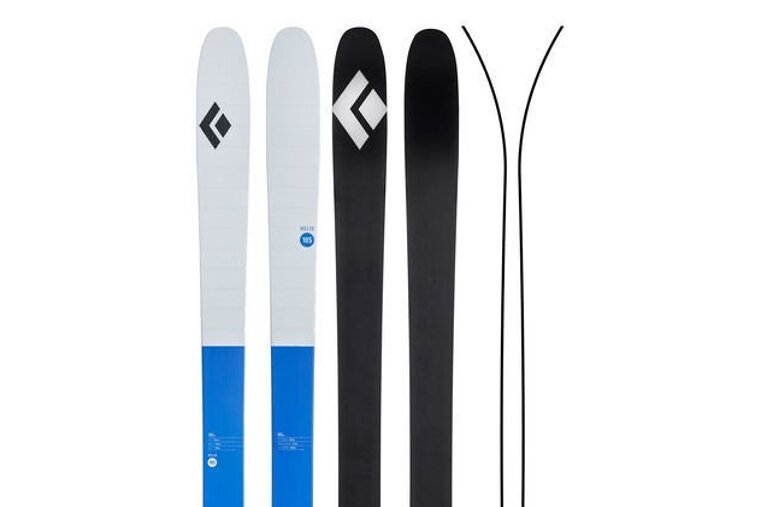
Black Diamond Helio 105 Carbon
Black Diamond’s Helio range of skis are built to offer the backcountry skier with a light yet performance-driven ski. The 105 is the most versatile ski in the line and is a great choice for those who seek out big lines and deep snow but don’t want a ski that will weigh them down in the skin track. Coming in at just 3.15kg per pair, the Helio 105 features a high-end carbon/wood core construction combined with a large amount of tip rocker and a small amount of tail rocker. Traditional camber underfoot provides solid edge hold and the 105mm waist is a versatile option for all mountain, all snow performance. The Helio 105 should be a consideration for anyone looking for a deep snow orientated touring ski.
Jargon Buster
Camber/Rocker
This refers to the profile of the ski when viewed side-on. Camber is the upward curve that’s usually built into the middle section of the ski. When compressed, it provides the ski with edge hold and power. Rocker is the upward curve of a ski that is used to increase float and improve turn initiation. The market is awash with many different camber/rocker profiles depending on the kind of snow, terrain and user the ski is aimed at.
Carbon
Carbon is often used as an ingredient in the construction of high-end skis. It usually reduces the overall weight of the ski versus other materials and provides a damp and reactive ride.
Radius/Sidecut
A ski’s sidecut is the difference between the tip/tail and waist widths. The narrower a ski’s waist is in relation to its tip and tail, the deeper its sidecut. This will result in a smaller (tighter) turn radius. The wider a ski’s waist is the longer its sidecut and bigger its turn radius. Skis with a big radius will make naturally longer turns. They tend to be more stable at high speeds though are less able to make tight turns.
